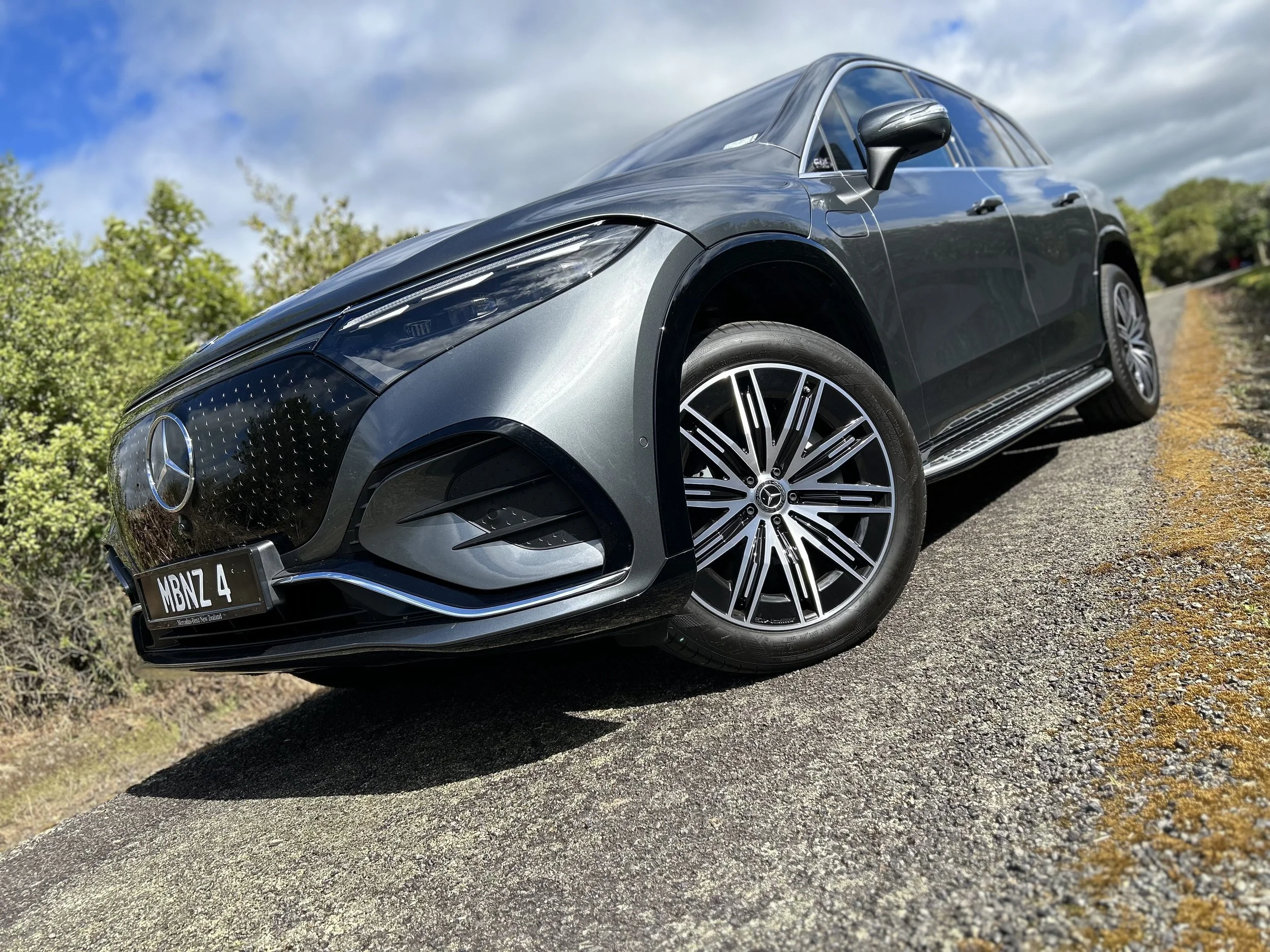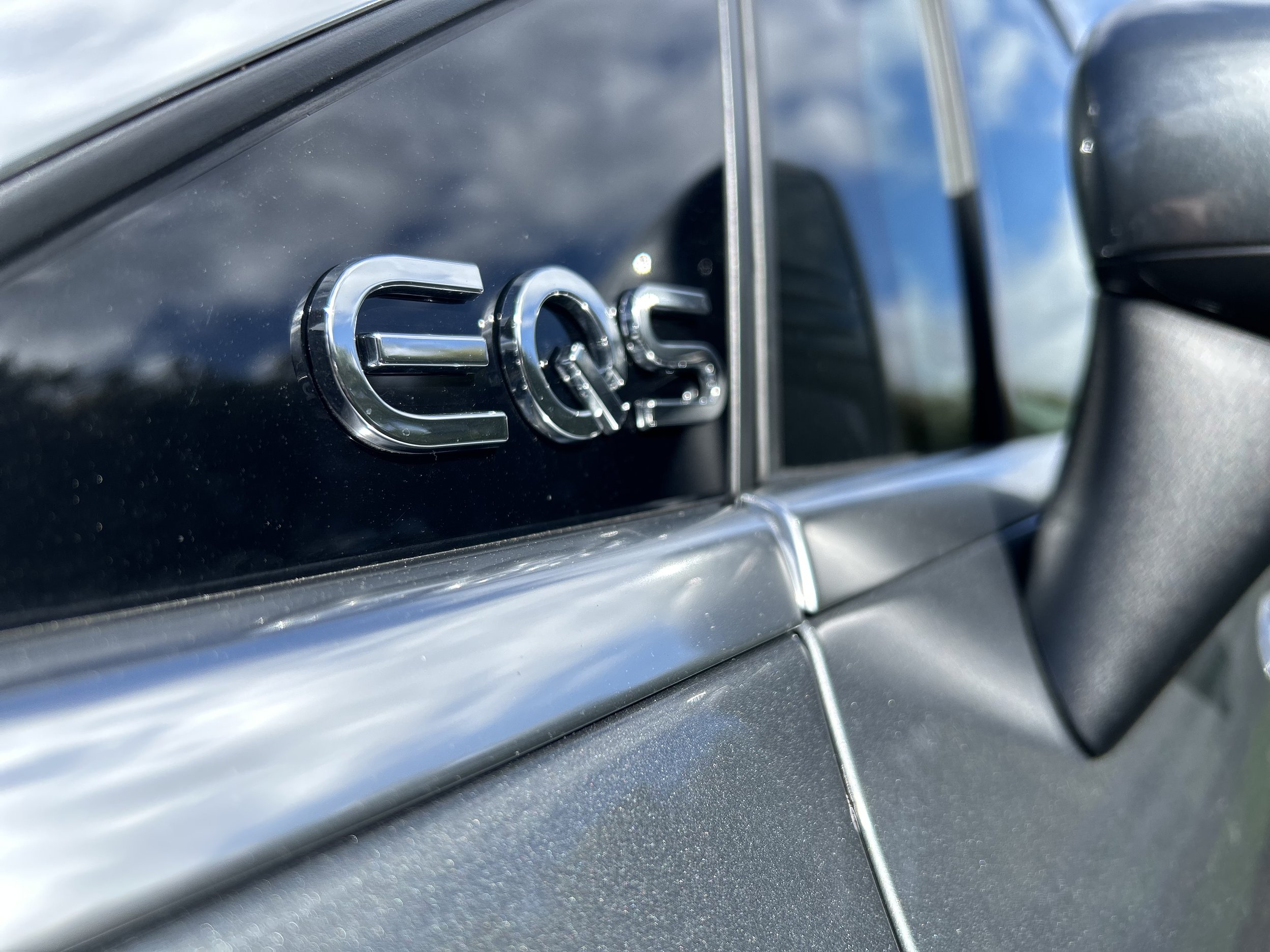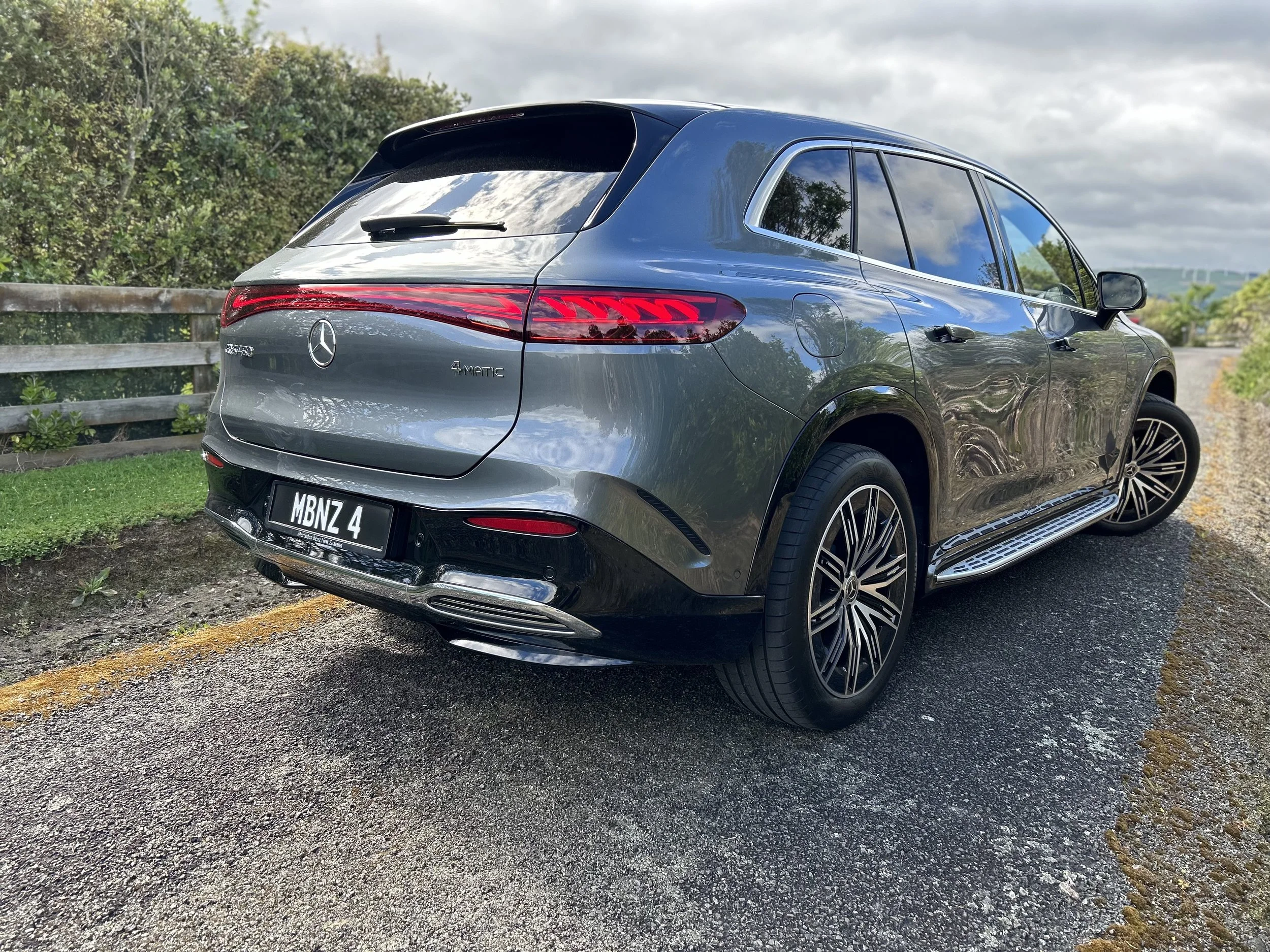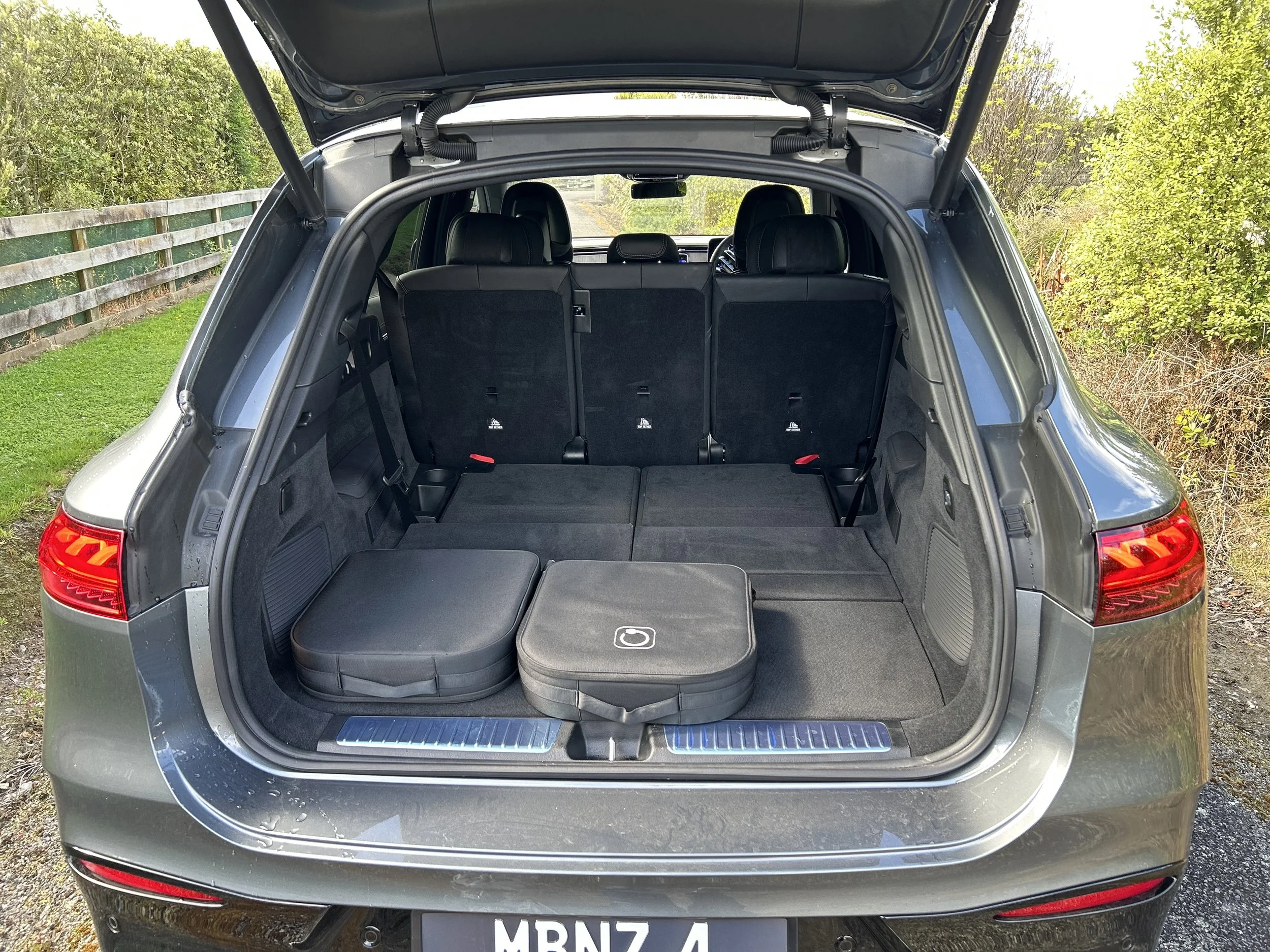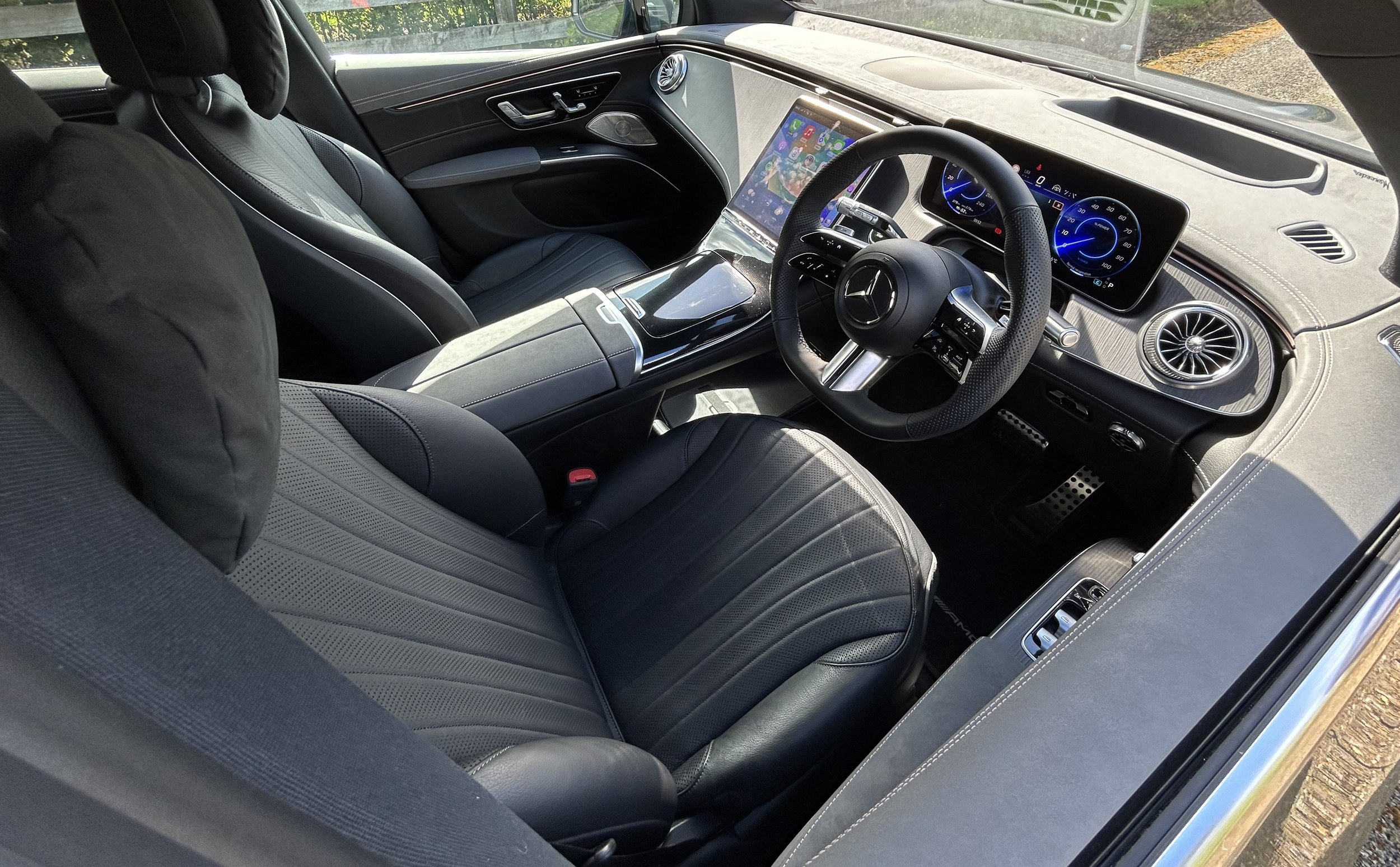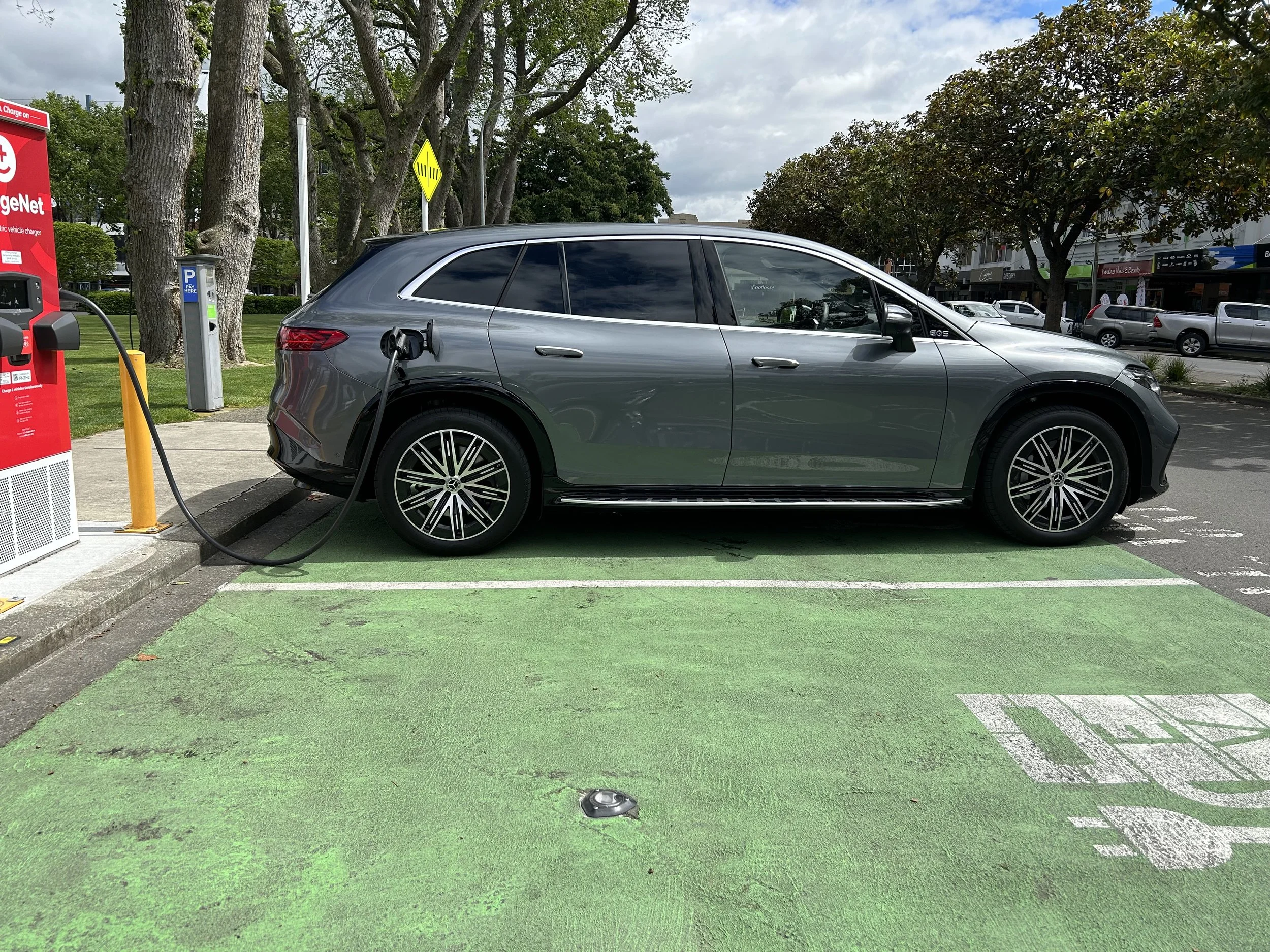Mercedes Benz EQS SUV 450 4Matic roadtest review: Fully upsized electric
/Future forward family mobility from the world’s oldest car brand is a sweet ride.
Price: $196,500
Powertrain: Dual electric motors, single speed transmission, 265kW/800Nm.
How big: 5125mm long, 1959mm wide, 3210mm high, 2850mm wheelbase.
We like: Refined; feels very solid, with high-quality materials;. roomy; good range.
Not so much: Less practical than GLS.
ELECTRIC sector leadership overall tends to waver between brands out of China - to find out where the leaders in prestige tech are, you need to head to Germany.
The truly homegrown BYD with its Atto 3 and the Model Y from Tesla - American, of course, but from China out of supply and pricing convenience - with MG occasionally having a sniff with the MG4; those are the mass market movers.
On volume count, those three alone are all putting a fair swag of product into the roadscape in any given month.
Add in the impact of others, such as the common platform-sharing fare across Volkswagen’s brand family, and then consider that, even after these years, the LEAF still figures strongly as a used import?
Even though they still account for just over two percent of new vehicles on the road, it’s understandable why electrics are now commonplace sightings.
Those, the Ford Mustang Mach-E and some fare from South Korea’s Hyundai-Kia mega-machine might be the most sensible spending.
But when you’re looking to consider the best that money can buy?
That requires a visit to the luxury sector. There’s also quite some choice, but the dominant players are all German and, if you’re looking for the brand with the widest spread, then for there’s just one star. Literally.
Mercedes' electric line-up has expanded further than any other makes and the push shows no sign of stopping for a while.
The pace Stuttgart has worked up to is such that early products are now being replaced for improved choices.
Amazing. Whatever would Carl Benz, who applied in 1886 for a patent for what we know to be the first vehicle powered by a petrol motor, have made of this?
The EQC was Benz’s first electric sports utility and a big thing when it silently joined the scene four years ago. It impressed enough in that first year to be named 2020 New Zealand Car of the Year. As we wrap up 2023, it’s on the way into retirement, bumped by Mercedes two new-generation models that, together, do a better job on all levels, and will also secure a wider audience.
Registrations-wise, the more relevant is the EQE SUV; I’ve had a taste, liked the flavour and look forward to a full test.
Today’s run is with its big brother; the fullest-size EQS that looks like a twin but is really quite a lot larger, all to deliver three rows of seats for room for seven rather than two rows and seating for five.
The name says it’s the SUV variant of the EQS electric limousine, that also zeroes in on its being the battery-fed equivalent of the Mercedes GLS flagship SUV.
The presentation tells a different story. In general shape, it and EQE are alike; being lozenges of different dimension. The kind of future car we drew as kids, but far better in dimension and detail. A spaceship without fins, designed foremost to be wind-cheating, without giving up practicality.
Even when parked up together, it’s not immediately obvious how much larger the EQS really is to an EQE, but a tape measure tells all. While EQE is big, EQS is significantly bigger: A whopping 262mm longer, 17mm wider and 32mm taller, with an additional 180mm between the front and rear axle.
Technical aspect is a story of cross-pollination with the EQE/EQS sedans that precede; a common platform, with the same drivetrain - including, ultimately, a massive 108.4kWh battery for long range. Just as well the electric side suits AC charging up to 11kW and DC charging at 200kW. A three-pin plug in the wall? If you don’t mind driving for one day, then spending the best part of the next three hooked into the national grid for replenishment, why not?
Insofar as EQS-ness goes, the sedan is the more VIP, and rightly so: It’s also $115k pricier. On the other hand, the SUV is hardly going to look dowdy in the waiting line outside a private school come end of term. It’s also polished; very refined, very comfortable and loaded with solid technology. There’s some very nice trim in here and the specification is also rich.
This is a model that, in standard form, runs on 21inch AMG multi-spoke alloy wheels, has a wireless phone charger, a 12.3-inch digital instrument cluster, a panoramic sunroof, 64-colour interior ambient lighting, air suspension, keyless entry and starting, a powered tailgate and LED headlights with adaptive main beam.
What it doesn’t get, unless you spend extra, is the Hyperscreen, which melds the instrument cluster, infotainment screen and another 12.3-inch passenger screen into one dashboard is the ultimate in displays. It looks fabulously futuristic and will wow your guests.
But is it necessary? The car as driven had the standard interface and, frankly, imparted all the functionality you could possibly need, rendered with high-resolution graphics - not as fancy but still nice enough.
The factory standard display is also reasonably easy to get along with, save that the touch-sensitive controls on the double-spokes of the steering wheel do take some getting used to. And, yes, okay, it’s always irksome trying to fathom how to set the head up display. On the other hand, the 12.8-inch MBUX central infotainment system is a model of sensibility. It supports wireless Apple CarPlay and Android Auto and augmented reality satellite navigation, too.
What benefits beyond this is that modern Mercedes cabin environments are all strongly related; if you learn the ways of one ensures easy acquaintance with the other. So it goes here.
Of all the options, the one hardest to resist is the $11,700 Comfort Plus pack; it really does elevate the car to ‘mobile living room’ status by adding a seatback-mounted rear entertainment system. This runs on the same MBUX operating system as the front, including a separate control tablet and wireless charging for mobile devices.
Still, straight from the box, there are lots of plush materials used throughout, from the artificial leather on the top of the dashboard - Mercedes's Artico trim is an excellent substitute for real leather - to the soft-touch plastics and metal air vents. The seats are also supremely comfortable; the front pair are basically thrones, with pillows below the headrests and a massage function. They are also contoured to fit and support most body shapes.
Seven seats. All I needed was six volunteers to fill them, with me as their driver. I didn’t quite get that sorted, but there were several occasions when passengers came along for the voyage, and none were complaining. Nor should they: Though the rearmost row is, as always, a pre-adolescent speciality zone, the second row area is expansive.
With the third row in usage, EQS luggage capacity is a bare 190 litres, but drop those chairs and it increases to a minimal 565 litres and up to 800 litres, depending on where the mid row is positioned. It can slide fore and aft 130mm, and the backrests can be adjusted 14deg forwards and 4deg rearwards to balance second and third-row space. Dropping the second seats creates 2020 litres space. the potential to be a practical luxury car, as well as a hugely comfortable one, is patent.
The only challenge when using it this way is to find somewhere else to stow the two large bags which Mercedes provisions for the cables. If you were an owner, obviously the home charger in the larger carrier would remain in your garage, but you might want to keep the other, an adapter, in the vehicle.
Access to the rearmost row is via the middle row, which all adjusts electrically. Entry and egress is fair. While legroom back there is tight for the tall, it offers good headroom and also, as SUVs go, the EQS is reasonably low-set. To point, actually, where the cost-plus running boards seem an unnecessary addition; if anything, they just raise the chance of leaving a mark on your clothing as you step out.
Otherwise, it is a practical luxury car, with decent cabin storage. A flip-up lid on the centre console opens to reveal the phone charging pad and cup holders, while the large, soft armrest features a deep storage bin beneath it, too. The door bins are deep as well.
For something so vast it's not as daunting to drive around town as you might think, it's not as wide as you might imagine and its surprising agility means it doesn't feel unwieldy in the bends either. Parking it is tricky though, as it's over five metres long, and even though there are parking sensors and cameras to help, accessing parallel locations when cars in bays either side are poorly placed will be a challenge of patience. Also, with some angle spots, the butt will stick out.
Given how it could almost get away with running in a bus lane without being nicked, a box worth ticking if you happened to live or mainly drive in congested zones is the $2900 rear-wheel steering upgrade. Rear-axle steering with a steering angle of up to 4.5 degrees is standard, and but the upgrade delivers 10 degrees of steering angle; while EQS overhangs are minimised by the shape, it is still a big car to manoeuvre in tight spots.
Out on the open road, this car is a cruiser; this of the ’S’ part of SUV being less ‘sports’ and more attuned to ‘serenity’. Standard air suspension sets the tone as it allows for an incredibly comfortable ride. Sure, you can change the driving mode for firmer damping, but that really isn't what this car is about. Indeed, it handles a sequence of tight corners quite well given its considerable weight and size with solid body control and decent steering, but it's more at home being driven in a relaxed manner.
Do that and you'll notice the lack of wind roar over the aerodynamic body, the lack of tyre and road noise though the chassis and the all-but silent electric powertrain. Benz might now have rued taking in recent years to call the GLS the ’S Class of SUVs’; the EQS is significantly more refined, still.
In terms of efficiency, I saw very close to the official energy consumption figure. An open road trip of just over two hours delivered an average consumption of 21.5kW/h per 100km which, given its size and weight, is pretty impressive.
Potential of seeing more than 500kms’ range on a full charge can be considered realistic, assuming the route is not too hilly or includes too much throttle adjustability or braking. Smooth, constant pace motorway driving is where you’ll stand best chance of getting close to official energy consumption figures; get to a constant speed and stay there and it’s in a happy place.
Putting the premium into the premium SUV market, means more than just ticking off limo-like luxury. Buyers might also feel need for decent towing and also some off-road performance. That’s where the EQS goes a little bit ‘lite’ compared to the GLS. Whether that proves a big hindrance is possible. Every logic most buyers of these high-end models don’t seem to have much of a sense of adventure. They might even be cautious on gravel - where EQS is perfectly fine - let alone hitting dirt, paddocks or sand. There is a snow mode that could be useful.
Going in this direction also asks for a big mindset change and these are early days for electric in a sector that generally drinks from the diesel pump, for good reason. Still, with fossil fuels becoming the bogeyman and brands such as this now committed to going to battery-fed solutions, the new age is beginning. The EQS might seem an unusual and uncommon sight at the moment, but that won’t always be the case.

